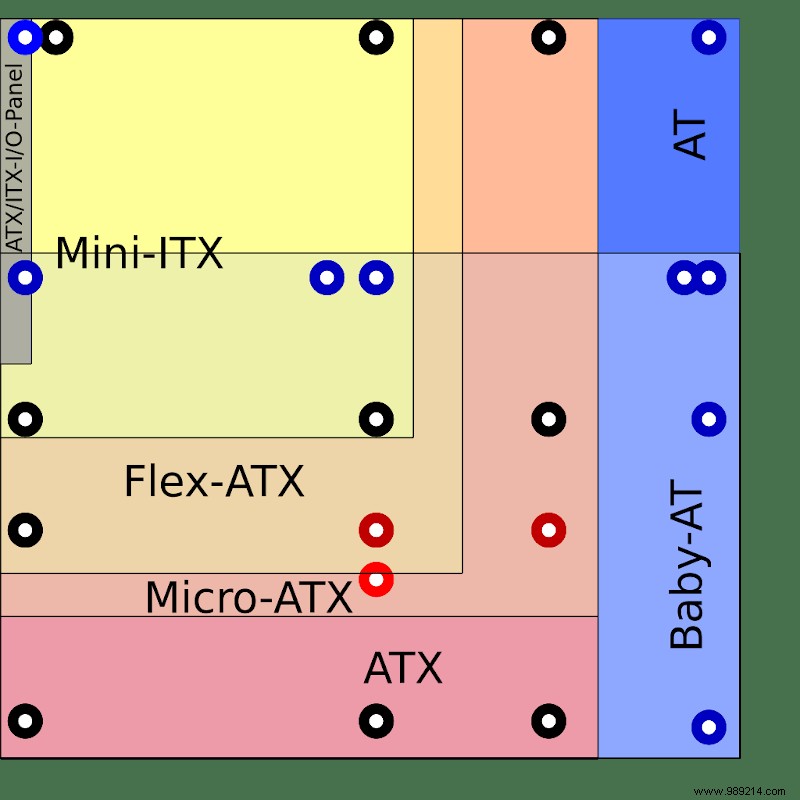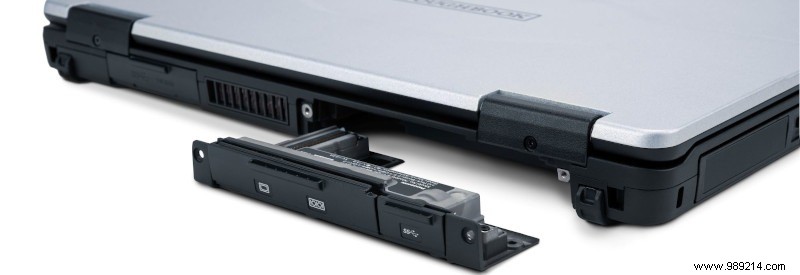Although the world continues to favor portable computing in the form of laptops and tablets, the PC market remains strong in one particular respect:it appeals to enthusiasts who assemble their own equipment in a way that allows them to customize and to fine-tune their experience to whatever their budget can muster. There's nothing more satisfying than crafting your own "rig" by stacking components inside a tower and watching it all come to life as soon as the power button is pressed. But how come this isn't a problem with laptops?
Laptops and desktops live in two completely different worlds. Considering space restrictions when building a PC is rare because it's a stationary object that sits around your desk. You won't be moving it much, so you can make it as heavy and bulky as you want.

While the ATX standard (several iterations of which can be seen in the image above) in modern desktop computers specifies particular motherboard dimensions, mounting configuration, and power supply configuration that allow enthusiasts to build their own systems based on these predetermined values, this does not exist as much in the world of laptops.
The vast majority of desktop computers have a fairly recognizable and repeatable layout:there's an ATX-sized motherboard mounted on an ATX-compliant case with an ATX-compliant power supply, and the CPU and GPU cooling systems consist of heatsinks with fans that help disperse Heat. The heights of these cooling systems often fit inside a standard tower case. If you strip all the "guts" out of two full-tower ATX PCs and flip them over, you'll be able to reassemble them in their new cases for the most part with no problems.
You'll never be able to do that with laptops, as their design focuses on both space saving and ergonomics, resulting in each having an almost unique cooling system layout. Even the shape of the motherboard is different from one model to another.
Here is the kicker :If you standardize laptops the same way you standardize ATX PCs, companies will have very little flexibility to develop powerful new technologies that could further reduce the dimensions of laptops. For example, if a graphics IC board that takes up less than half the space of previous models is invented, the manufacturer has no way to take advantage of this reduced space due to the pressure to comply with the standard. . This would ultimately lead to a less competitive overall market for laptops.
Ultimately, building your own laptop from non-manufacturer specific parts will probably never be possible for all the reasons described here. However, there are ways around this problem that some companies have experienced.
Although laptops will probably never standardize their hardware supports and dimensions, there is hope for some form of modularity where components can be upgraded to a large extent and swapped out for others depending on the user's needs. .

In mid-2019, Panasonic released the Toughbook 55 with exactly that in mind. Almost every component in the laptop can be removed and replaced with one that better suits your needs. Don't need an optical drive? Just swap it out for a SmartCard reader or dedicated graphics card. Technically, you can even place two batteries on the laptop, extending battery life to 40 hours, according to the manufacturer's own claims.
Another notable mention is that of Alienware Superficie-51m, which may not boast the same insane interchangeability of components, but allows the user to upgrade the CPU, GPU, memory and storage of the machine.
Unfortunately, with such flexibility, you are forced to sacrifice portability, which is essential for the majority of laptop users. Both of these laptops are pretty huge compared to their slimmer, sleeker contemporaries. Even so, modular laptops may be just what it takes to capture a niche market of enthusiasts who want more flexibility for their machines.
To answer the question posed at the very beginning of this piece:No, you'll probably never see a time when you can just buy a case and fill it with components to make a laptop out of it. Still, that doesn't mean you can't buy a laptop that lets you tweak its hardware more than with other models. If you want such a machine, however, you will have to live with the fact that it will be heavier and bulkier than the others.